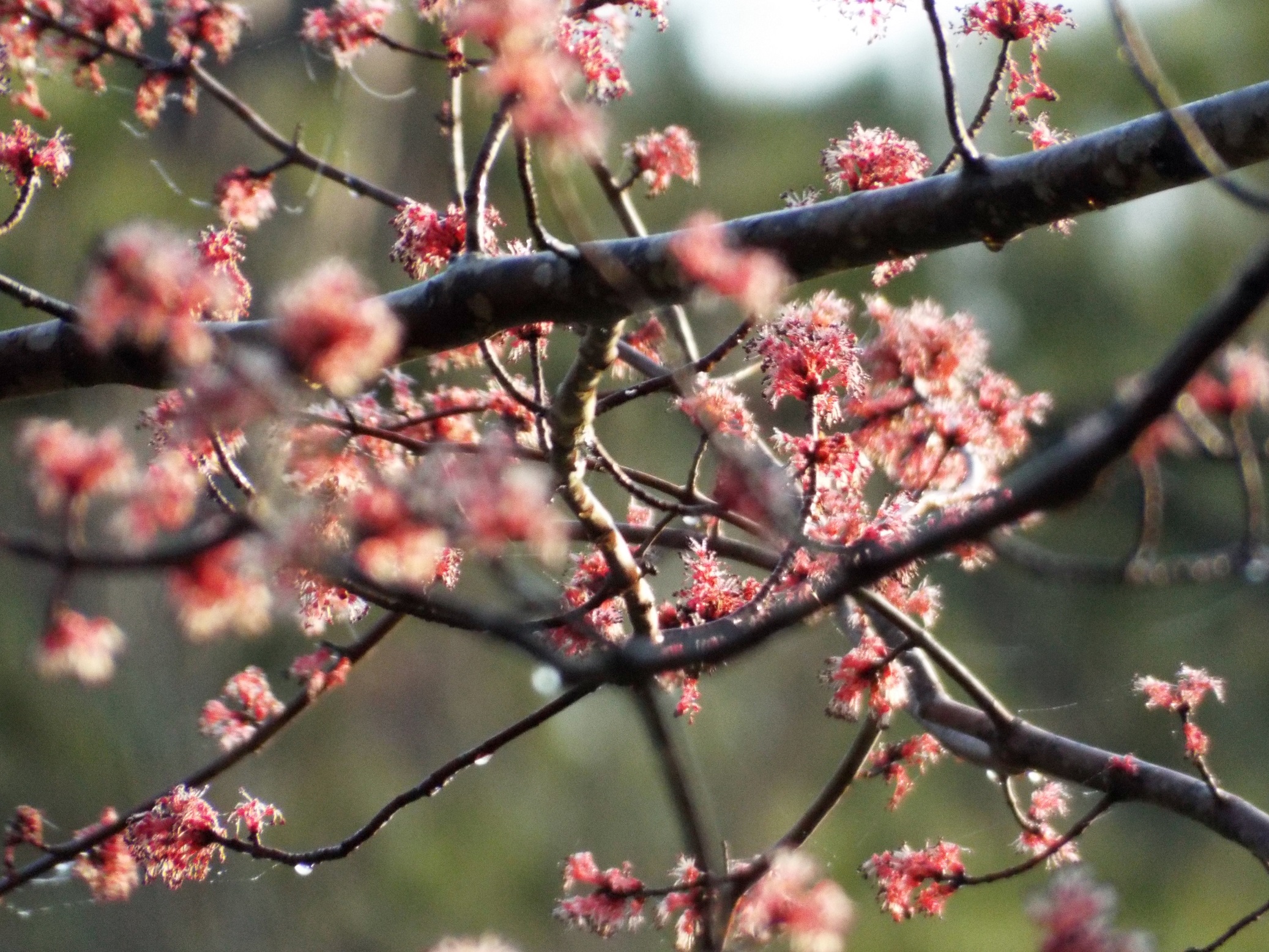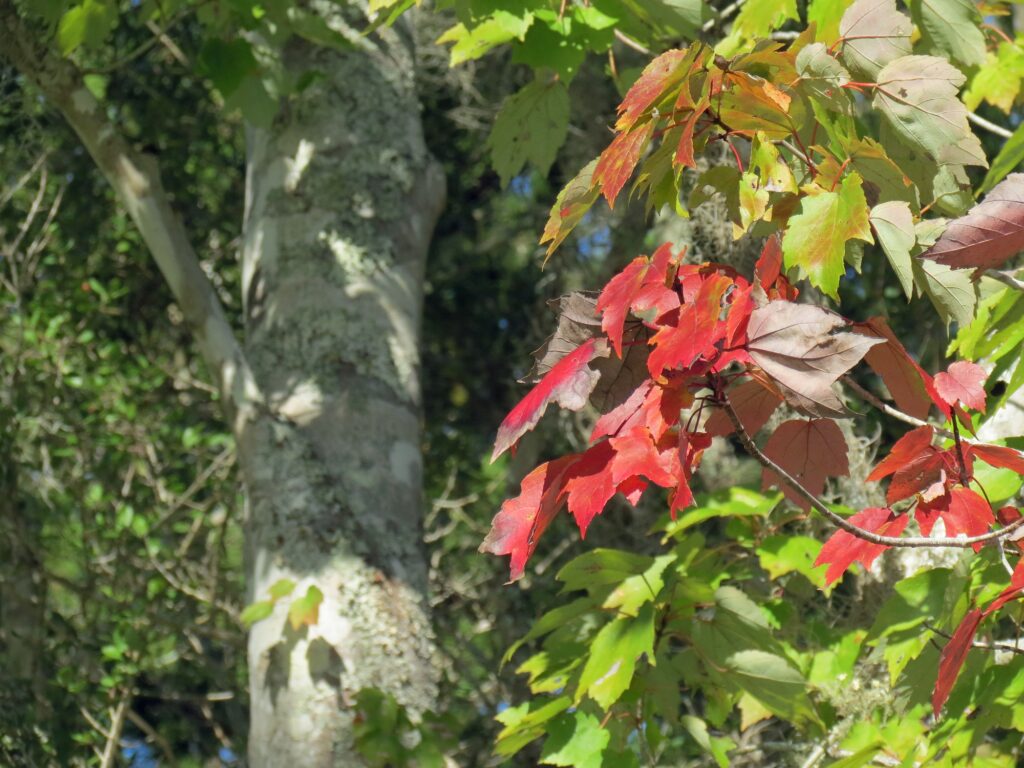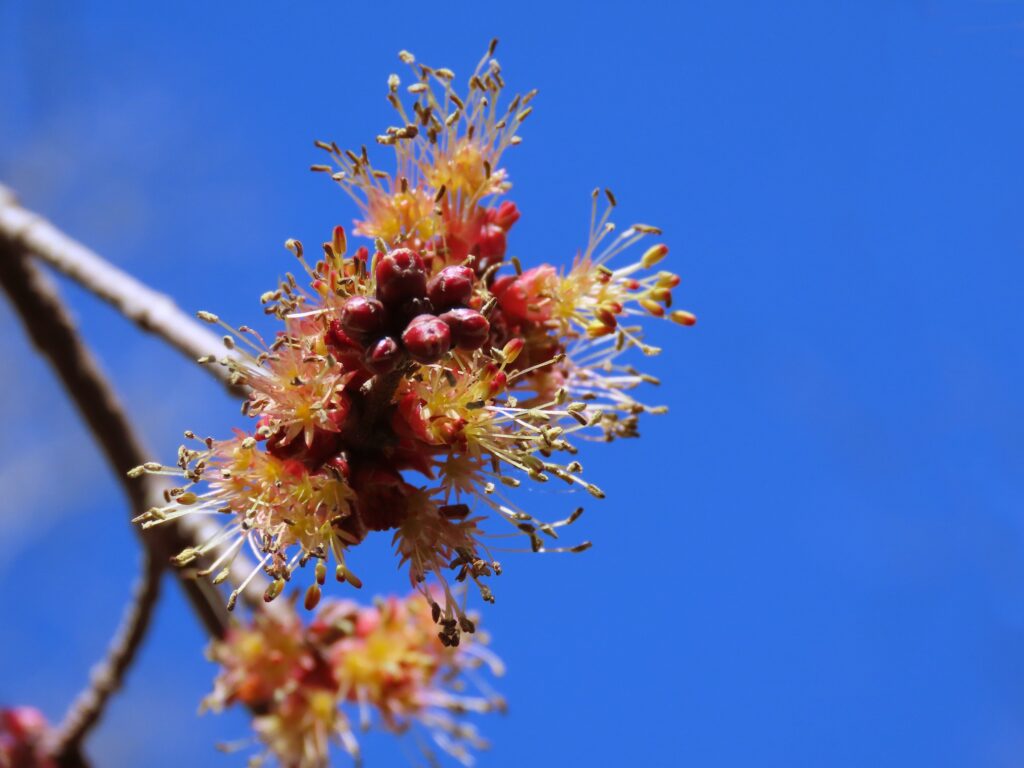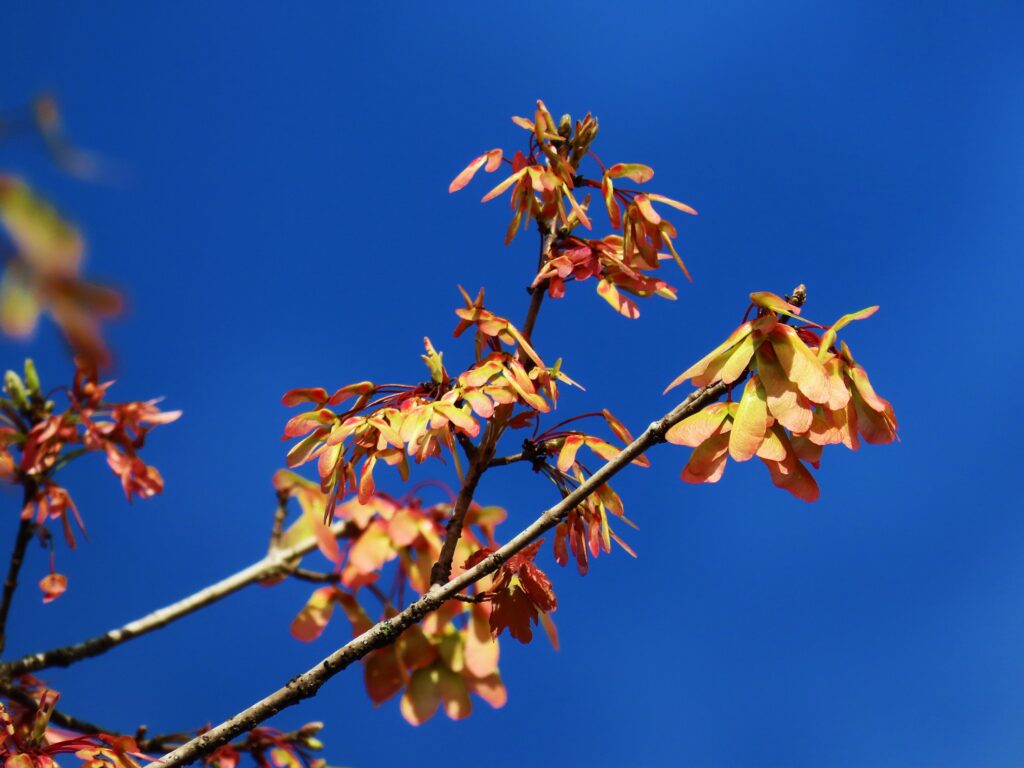



This week for Flora and Fauna Friday, we have a wetland tree that produces some of our first flowers of the new year. This week we’re taking a gander at Red Maple (Acer rubrum).
Red Maple is a common species of tree throughout the southeast. It’s a handsome plant with something for every season. In summer, its verdant green leaves, three or five-lobed and opposite each other, sway in the breeze. The smooth gray-white brindled trunk sucks water from the mucky soil of the wetland it anchors. Those leaves held limply on the limbs brew these murky waters into sugars. Red Maple is a close relative of the Northern Sugar Maple (Acer sacchraum) which is tapped in Canada for making maple syrup. With the onset of fall, the Red Maple produces its namesake display. The weather cools and the leaves redden. The once emerald foliage shifts to golden orange before settling on a scarlet that envelopes the entire crown. This presentation of pigment is only a byproduct of the plant’s built in sunscreen. This red is a mix of anthocyanins and carotenoids. These pigments protect the leaf from solar damage, absorbing the light wavelengths that chlorophyll doesn’t. Carotenoids are yellow and orange. Anthocyanins are red and purple. The leaves of Red Maples are high in both, producing a deep crimson color. During autumn, the tree breaks down chlorophyll and other cellular components in its leaves before dropping them. These pigments then become visible and more anthocyanins are pumped in to guard this botanical salvage operation. As the leaves age further, they dry and are shed. Through the first month of winter the marbled bark and bronzed twigs lay dormant. But in the depths of winter, their blooms break. A burst of soft red and pink erupts. A spray of color that captures the frosty dew. As these flowers fulfil their purpose, the fruits of their labors appear. A one-winged fruit born in pairs. A lime green head that bears a cresting rosy blade. These are samaras, specialized dry fruits built to spin as they fall. This graceful whirl allows the seeds to ride the wing as they float to the Earth. These seeds provide food for birds and rodents, both in the trees and on the ground.